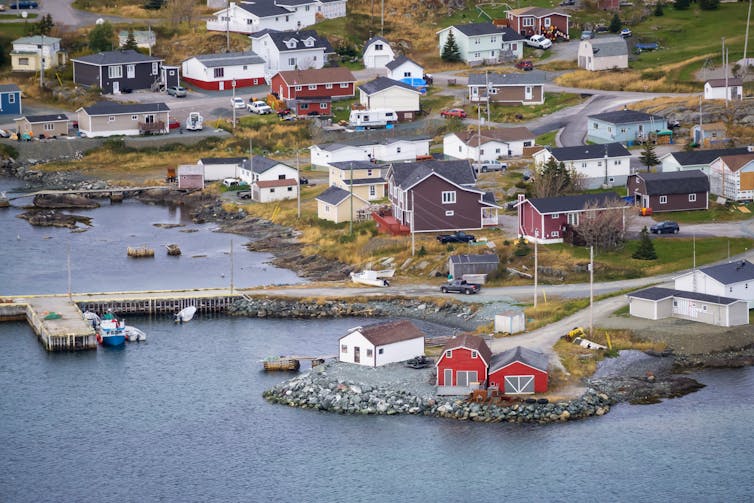Rural communities are especially vulnerable to the impacts of climate change, a new federal report has found, because they often have fewer resources to handle environmental or social disruptions.
While these communities may be innovative, they often lack access to the resources that broad networks, connections and collaboration can bring. Their focus on addressing immediate issues often depletes any existing resources, which limits their ability to build connections and networks.
In Newfoundland and Labrador, for instance, communities have been working for decades to recover from the collapse of their primary local industry, the cod fishery, after the federal minister of fisheries and oceans declared a moratorium on the Northern Cod fishery in 1992. The subsequent economic, environmental, social and cultural impacts have been widespread.
Collaboration is essential for finding solutions to complex crises like this. As communities across the globe struggle with mounting social, ecological and economic issues, creating conditions for collaboration and connection in and across communities can drive local resiliency and revitalization efforts.
Studying community gatherings
To explore how convening community leaders in a local place can inspire innovative ideas for revitalization, we conducted a study of an annual gathering in rural N.L.
Our research team co-organized and studied an event called the PLACE Dialogues. This event gathers community leaders from across N.L. in a different small community each year to share stories, strategies, inspiration and solidarity.
More than just geographic locations, places are full of meaning shaped by natural environments, built structures, cultures, and social systems. These host communities exemplify the power of place to connect us with nature and each other, and are a source of resources that, when managed properly, can be leveraged to revitalize these places.
We ran the sixth annual PLACE Dialogues in St. Anthony, N.L. in October 2023. The theme was “Co-Creating Community Entrepreneurship,” and local leaders learned about examples of communities across the province engaged in social entrepreneurship to revitalize their communities.

Some of these leaders were also co-authors of an edited volume designed to integrate academic and practitioner perspectives on the role of social enterprises in revitalizing communities.
These opportunities for learning about common challenges and sharing success stories bring community leaders together, show them that they are not alone in their struggles, and build relationships that encourage collaborative problem solving.
Building meaningful connections
How can other communities benefit from gatherings such as the PLACE Dialogues? Our research uncovered three principles for convening community leaders to build meaningful connections and engage in solutions-oriented conversations.
1. It mattered where we convened with community leaders. The PLACE Dialogues are held in small or rural communities dealing with complex social and ecological challenges. Being connected to these places allowed us to see the realities communities are facing and identify which local resources are important for addressing issues and building resiliency, including stories, social networks, and physical and natural resources. Having discussions with community leaders in town halls that reflected their own community spaces helped foster authentic conversations around community development.
2. We created opportunities for deep connection in place. We made it a priority to immerse participants in the communities by having interactive cultural activities, like rope weaving or cod filleting, and incorporating local cuisine, music and storytelling. These experiences brought participants closer together and created opportunities for bonding and trust building, two key ingredients in successful collaborations. These connections encouraged knowledge sharing among the participants and helped them to develop a sense of belonging to a larger network of people working to build stronger communities.

3. Honouring the differences between community leaders was crucial. The PLACE Dialogues brought together people of many different backgrounds, including government representatives, entrepreneurs and academics. It was important to ensure all voices and perspectives were valued and heard. We worked to level the playing field and lower power differences in the group through interactive activities and by giving all participants opportunities to feel supported, heard and valued as they shared their own experiences with community development. Having an inclusive space for multiple perspectives to exist together in these discussions created a more engaging learning environment.
With growing crises around the world, communities are grappling with challenges and offering important solutions to address them. To generate more effective solutions, community leaders need to collaborate and build cross-sector networks to access a variety of resources that may not be readily available in their own community.
Convening leaders in the very communities facing social, ecological and economic crises to collaborate and share solutions and networks is crucial for building local resilience in the face of these growing crises.

